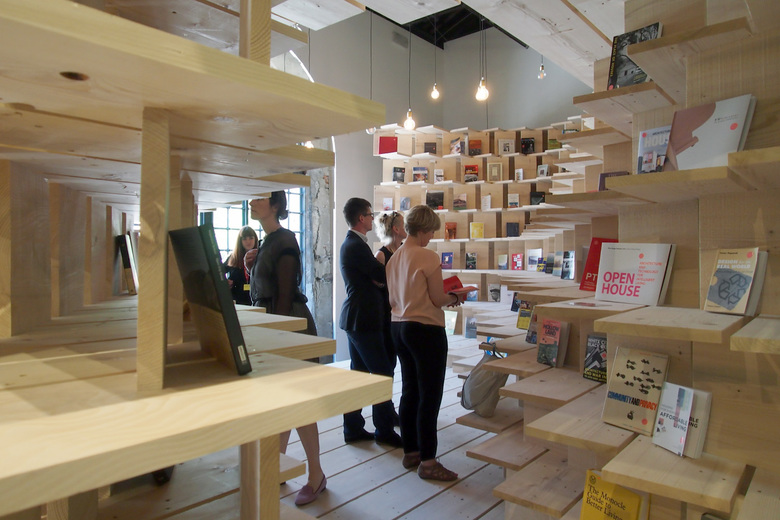Slovenia's 'Home at Arsenale'
The Pavilion of Slovenia at the 2016 Venice Architecture Biennale is a wooden structure filled with books that goes under the title Home at Arsenale: a curated library addressing the notions of home and dwelling.
Aljoša Dekleva and Tina Gregorič of Dekleva Gregorič Arhitekti curated and designed the pavilion in order to "propose the concept of the home as a public curated library that operates as a platform for exploring the notions of home and dwelling, during the [Biennale] and beyond." After its six-month residency at the Arsenale, Home at Arsenale will move to the Museum of Architecture and Design in Ljubljana. Regardless, Dekleva and Gregorič's design is highly site specific: an open space (patio) and pavilion sit next to two windows in the Arsenale, with the pavilion carved to provide access and open up the books to the daylight streaming in through the window.
To stack the shelves with important texts on home and dwelling, the curators reached out to about 30 architects, curators, writers and artists from Slovenia and elsewhere, including Pezo von Ellrichshausen, Juan Herreros, Marjetica Potrč, Sadar+Vuga, and TYIN tegnestue. The exhibitors selected 10 to 20 books each, with the final selection on display ranging from seminal texts (Le Corbusier's Vers une architecture, Gaston Bachelard's The Poetics of Space, Chermayeff and Alexander's Community and Privacy) to more obscure titles, at least in the context of the exhibition (Ant Farm's Inflatocookbook, all seven books of J.K. Rowling's Harry Potter series, Raumlabor's Hotel Shabby Shabby). Although each exhibitor selected at least one of their own books, the final roundup of books is a highly varied and impressive one that invites visitors to sit down, take a break from walking about the Biennale, and read for a while.
But the exhibition is more than a wooden structure filled with books. During the pavilion's tenure in the Arsenale, the patio and pavilion hosts interviews, talks and workshops "in order to intensify the interaction with the public." Yet by putting books on display and giving people a place to read, Dekleva and Gregorič acknowledge how reading is a social act, not just an individual one. Unlike reading on an iPad or iPhone, which immerses the reader into a digital void, a book – as an object with a cover and pages – invites interaction to unite people through conversations that come about through reading.


